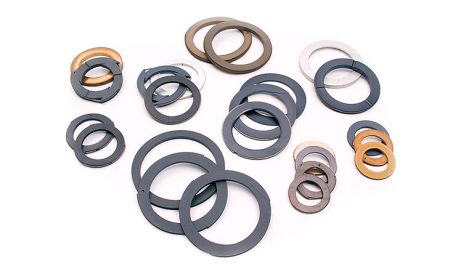Blackberries are like raspberries. The Largest blackberry-producing state is Uttarakhand in India. Blackberries thrive well in temperate regions with mild winters and cool summers as they are susceptible to cold weather. Blackberries farming is the best way to improve financial growth. These berries are easy to grow. Once you ripe the berry, then ready it for harvest. And pick it up in two or three days.
You should also know that blackberry cultivation requires the most important equipment, which plays a major role in agro-processing. Equipment, harvesters, and tractors are the main factors in cultivating the blackberry. Hence, we recommend the Massey Ferguson tractor.
What is Blackberry ?
Blackberry, generally a prickly fruit-bearing shrub of the genus Rubus of the rose family (Rosaceae), is known for its deeply edible fruits. Blackberries are an excellent source of vitamin C, iron and antioxidants and are commonly eaten fresh. And also you can preserve, or baked goods such as pies and cobblers. Here we are describing how to grow and harvest blackberries in your backyard.
When to plant the Blackberry?
- Plant in early spring when canes are dormant.
- Farmers can also plant the blackberry in late fall. However, you must delay the planting in very cold areas until early spring as low temperatures could kill some hybrid varieties.
- These fruits and their hybrids are all self-fertile, so we can say that you don’t need multiple plants for fruit production.
Planting Site – Choosing and Preparing
For best berry yield, choose the site that receives full sun. You should cultivate it in fertile soil with good drainage. Also, farmers can add some organic content to enrich your soil. Moreover, you have to make sure that you cultivate blackberries different from wild blackberries. And you should keep it free from diseases that may weaken your plant.
How to Plant Blackberries?
You should keep the distance between 5 to 6 feet in plants for semi-erect cultivars and, on the other hand, keep the distance 3 feet between space erect cultivars. 5 – 8 feet distance required in space trailing varieties. Apart from this, space rows are about 8 feet apart.
Plant shallowly: about one inch deeper than you grow blackberry in the nursery.
How to Care for Blackberries while Growing?
- Mulching plays a very important role in suffocating weeds and conserving moisture throughout the season. At all times, keep a thick layer of mulch surrounding the plant.
- A farmer requires abundant moisture for blackberries, especially when growing and ripening.
- Therefore, you should ensure that plants receive one inch of water per week and more in hot temperatures.
- Fertilizing the blackberries in early spring with all-purpose fertilizer like 16-16-8 or 10-10-10.
Types of Blackberry
- Trailing Trailing blackberries
- Erect thorny blackberries
- Erect thornless blackberries
Trellis Trailing Blackberries
Trailing blackberries require a trellis or support. Explore a two-wire system, run the top wire at five to six feet along the second line 18 inches below the top wire. There will be fruiting floricans with stars after the first year. Train the new primocanes in a narrow row under the fruiting cane. Directing all the canes in one direction can make it easier.
Pruning
We have provided detailed pruning information below. However, the main idea is to simply remove the old canes that already bore fruit and let new ones take their place.
Trailing blackberries:
You should remove the older fruits (floricans) from the ground after the fruit harvesting period. However, it is best to delay removing old fruiting canes unless there are plenty of diseases until they are largely dead. This allows the dying cane to carry nutrients back to the crown and roots. Train the primocanes on the strings after the old fruiting canes are removed. Around the trellis wires, work with one or two canes at a time in a spiral. Canes of adjacent plants may overlap slightly. No pruning of primocanes is necessary.
Choose the region with low winter temperatures, leave primocanes in the ground for the winter, where you can mulch them for winter protection. After the threat of utmost cold has passed in spring, train older primocanes (now considered floricans) to strings. They are more likely to break and avoid working with canes in cold weather.
Erect blackberries:
It produces shorter and stiff canes from root suckering and crown. To grab the benefits of erect blackberries, do summer pruning. After the plants’ height is 4 feet, you have to remove the top 1-2 inches of new primocanes. So, it can increase the yield next year. The plants need several pruning operations to tip each cane as they reach the four-foot height. In addition, you should regularly remove the primocanes that grow outside the hedgerow.
How to Harvest Blackberries?
- Farmers should pick those berries for harvesting, which are full black. Mature berries are a deep black colour, plump yet firm and pull free from the plant without a yank. After being picked, do not ripen the berries.
- Once you start ripening the blackberries, you must pick them often after 2 to 3 days.
- When picking the blackberry, you should maintain the central plug within the fruit, unlike raspberries.
- Farmers should harvest the blackberries during the cooler time of the day. Once you pick it, keep the berries in the shade and refrigerate it as soon as possible.
Tractor Requirement in Blackberry farming
The tractor is an indispensable aspect of blackberry farming. The tractor is used in every segment of agriculture. Because as a start the tillage process in agriculture, you need the tractor in this farming. Therefore, a tractor has become the primary factor in farming but choosing the right one is not easy. Hence you can use the Kubota tractor for blackberry farming.
For more information regarding blackberry farming in India, stay tuned with us.





